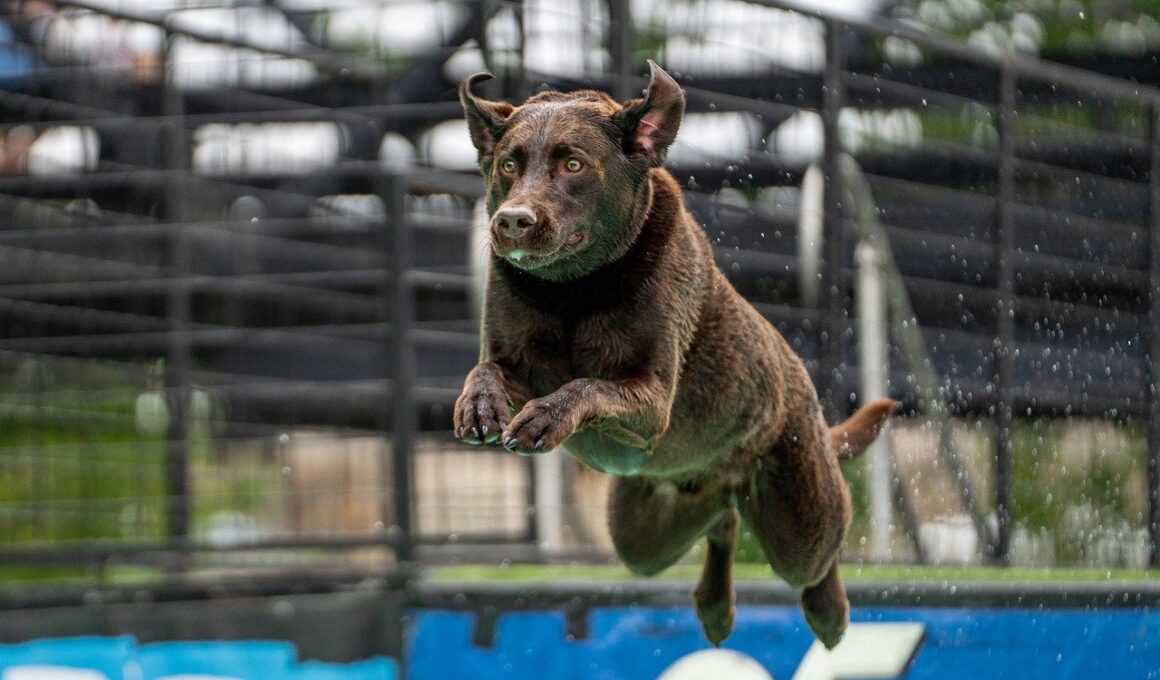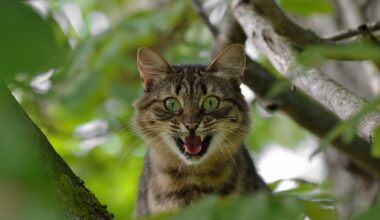How to Choose a Camera for Shooting Dogs in Action
Choosing the right camera is essential for capturing stunning dog photography. When photographing dogs in action, you need a camera that blends speed with quality. Start by considering your budget, as cameras come in a wide range of prices. For beginners, entry-level DSLRs or mirrorless cameras can offer excellent performance without breaking the bank. Look for a model that can shoot continuously at high frames per second to capture those fleeting moments. Additionally, ensuring that the camera has a fast autofocus system is crucial for tracking your furry subjects. A camera with a large sensor will help in achieving better image quality, particularly in low-light conditions like during early morning or late evening shoots. Evaluate the various lenses available for the camera you select, since different focal lengths can provide unique perspectives. Depending on your style, a zoom lens might allow versatility in a range of shooting situations. Consider also the camera’s weight and ease of use; a lightweight option can help you maintain agility when chasing after active dogs. Overall, research extensively before making your decision to ensure you get a camera suited for action photography.
In addition to camera features, you should also consider the lenses to enhance your dog photography experience. A versatile lens can make all the difference when capturing the swift movements of dogs playing. For action shots, a lens with a wide aperture is particularly beneficial, as it allows for faster shutter speeds. This is vital for freezing action and avoiding motion blur. A good option is a 70-200mm zoom lens, which provides enough reach for capturing dogs at a distance without disturbing them. Thus, you can comfortably shoot from afar while ensuring you capture every leap and bound they make. Having a second lens on hand can add variety to your shots, allowing you to experiment with different perspectives. Additionally, consider a lens with image stabilization, which can help maintain sharpness when shooting at slower shutter speeds. Each new lens you add to your kit can open up a new avenue of creativity. Before purchasing, read reviews and watch comparison videos to understand how different lenses perform. Try renting a lens first before committing to a purchase, allowing you to determine what best suits your photography needs.
Importance of Shutter Speed
Shutter speed plays an integral role in capturing dynamic action shots of dogs. To effectively freeze a dog’s motion, you typically want a shutter speed of at least 1/500th of a second or faster. Knowing this will empower you to set your camera settings accordingly. Set your camera to continuous shooting mode, enabling the ability to shoot multiple frames in quick succession. This feature is crucial when trying to capture the perfect moment, such as a dog leaping into the air or running toward the camera. Moreover, a faster shutter speed not only freezes motion but also helps avoid blur in your images. It’s equally vital to have an understanding of light conditions when adjusting your shutter speed. During bright daylight, utilizing a fast shutter speed is straightforward, but softer light conditions may require adjustments or the use of a wider aperture. When experimenting with shutter speeds, don’t be afraid to assess your results in real-time. Check your images for sharpness, and make adjustments on-the-fly if necessary. Ultimately, mastering shutter speed will open up creative avenues in your dog photography.
Exploring the ISO settings is crucial for optimizing your dog photography, especially in varying light conditions. ISO measures a camera’s sensitivity to light, which can directly impact the quality of your photographs. A lower ISO, typically between 100-400, is ideal during bright daylight. This setting enables cleaner images with minimal noise. However, when shooting indoors or during low-light conditions, increasing the ISO setting to around 800 or higher may be necessary. Be cautious, though, as higher ISO values can introduce graininess to your images. It’s a balancing act to find the optimal ISO that produces clean images while still allowing for the correct exposure. Testing different ISO settings in various conditions will enhance your skills. Also, make use of the camera’s histogram function for real-time feedback on exposure levels. Understanding this feedback can help you make adjustments to ISO, shutter speed, and aperture accordingly for best results. Experimenting with all three settings while observing their interactions will ultimately lead to crisp, clear images in any situation, providing stunning captures of your beloved canine.
Composing Action Shots
Effective composition is key in dog photography, especially when capturing action shots. The rule of thirds is a great guideline to keep in mind. Positioning your subject off-center allows for more dynamic images, adding interest. When shooting in action, try to anticipate the dog’s movements and frame your shot accordingly. This might mean adjusting your position to follow their path or moving closer to catch expressions and movements. Incorporate interesting elements in the background to enhance the scene, providing context and depth. A blurred background can also emphasize the dog and make them stand out in the composition. Don’t forget to focus on the eyes of the dog; capturing a sharp image of their eyes can add depth and emotion to your photos. Continuous focus mode can be particularly useful in action shots, ensuring that the subject remains sharp, even as they move rapidly. Lastly, don’t be afraid to shoot in burst mode, capturing multiple frames to increase the likelihood of getting that perfect action shot. Composition plays a crucial role in elevating your dog photography to a professional level.
In addition to the technical aspects, understanding your subject is pivotal in dog photography. Building rapport with the dogs you shoot can yield fantastic results. Familiarize yourself with their personality traits and behaviors, as each dog is unique and may respond differently during a shoot. Spend some time with the dog to allow them to become comfortable before turning on your camera. A relaxed dog will provide more authentic and lively images, making both of you more at ease. Use treats or toys to engage their interest, helping you capture natural interactions and expressions. Observing the dog’s body language can provide cues for when they’re about to leap, run, or play, allowing you to prepare in advance to capture the action. Timing is everything; knowing when to click can make the difference between a good and a great shot. Take the time to gain an understanding of what each individual dog deems exciting, ensuring you maximize your shooting potential. This knowledge can lead to breathtaking images that tell the story of the bond between a photographer and their canine subject.
Post-Processing Techniques
Post-processing is an essential part of dog photography, allowing you to enhance images further after the shoot. Basic editing tasks such as cropping and adjusting exposure can dramatically improve the final photograph. You might want to consider software options that are user-friendly, particularly for beginners. Programs like Lightroom and Photoshop have tools designed for this purpose, enabling fine-tuning of your photographs. Adjusting highlights and shadows helps in giving more depth, while sharpening the image can enhance fine details, especially around the dog’s fur. Be mindful not to over-edit; maintaining the authenticity of the dog is important. Consider using filters sparingly to add a touch of artistic flair without sacrificing quality. Color correction may also be necessary to ensure that the dog’s fur and the environment are accurately represented. Furthermore, explore various printing options to showcase your work best; this allows you to bring your dog photographs to life. Whether it’s a gallery display or albums, the presentation can make your work shine. Ultimately, post-processing should enhance your stunning captures and help tell the story of your adventures with dogs.
In conclusion, selecting the right camera and mastering the techniques for dog photography can lead to beautiful and lasting memories. Investing in a camera that meets your needs will allow you to capture the unique personalities of dogs as they frolic and play. Alongside choosing the right equipment, honing your skills in shutter speed, ISO, and composition will elevate your photography to new heights. Understanding the dogs’ behaviors and building a bond with them unlocks a wealth of possibilities for striking images. Moreover, never underestimate the power of post-processing in enhancing and finalizing your images. Each step in the process is valuable, from before the shoot to the final edit. Through practice and dedication, you can develop a portfolio that showcases the magnificence of dogs in action, captivating both lovers of photography and animals alike. Remember to enjoy the experience, learn from each shoot, and continuously experiment with new techniques and approaches. Celebrate the moments you capture and the joy these dogs bring to your life. With the right strategies and understanding, your journey into dog photography can be incredibly rewarding and fulfilling.


